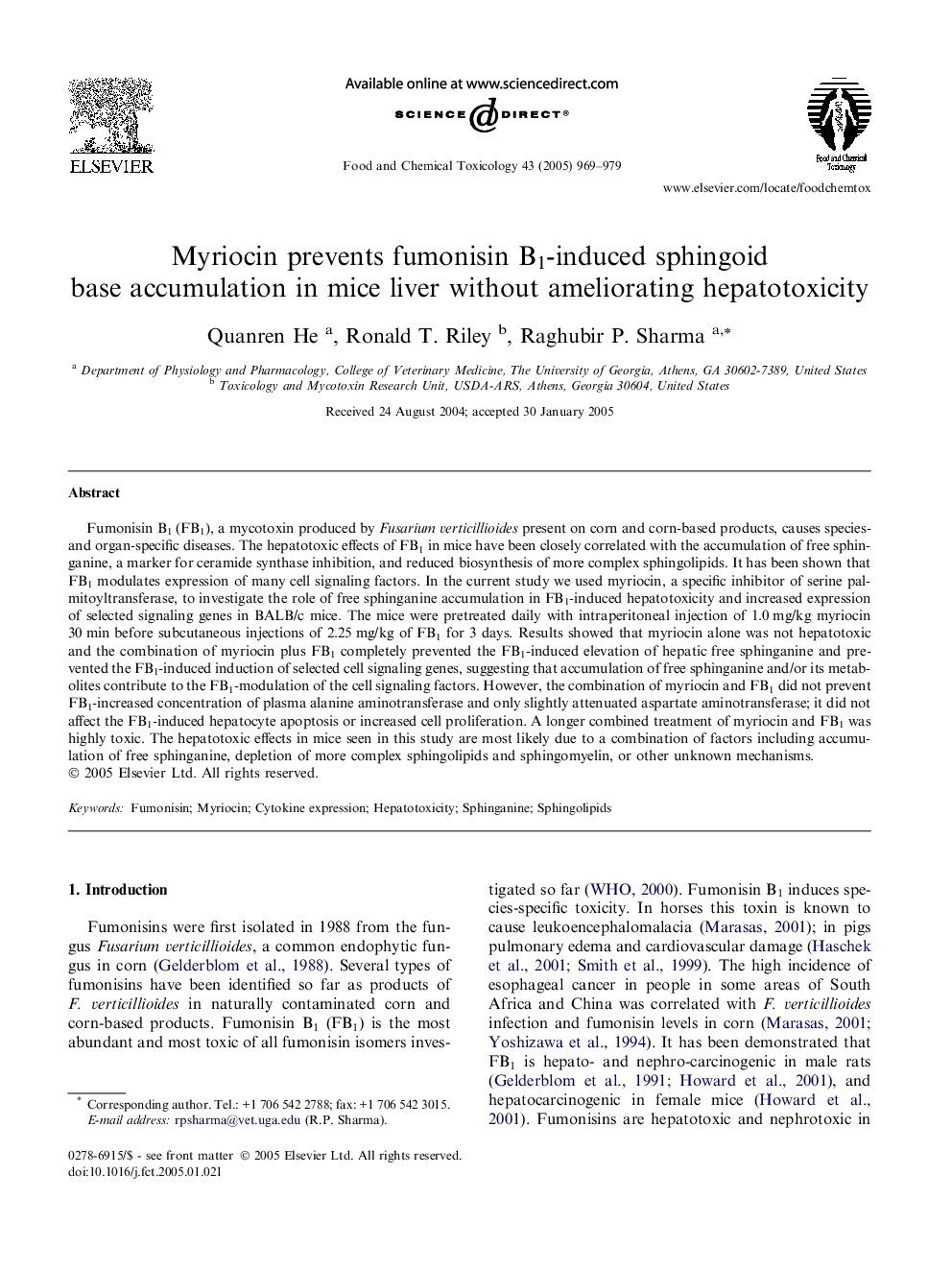| کد مقاله | کد نشریه | سال انتشار | مقاله انگلیسی | نسخه تمام متن |
|---|---|---|---|---|
| 9031032 | 1130963 | 2005 | 11 صفحه PDF | دانلود رایگان |
عنوان انگلیسی مقاله ISI
Myriocin prevents fumonisin B1-induced sphingoid base accumulation in mice liver without ameliorating hepatotoxicity
دانلود مقاله + سفارش ترجمه
دانلود مقاله ISI انگلیسی
رایگان برای ایرانیان
کلمات کلیدی
موضوعات مرتبط
علوم زیستی و بیوفناوری
علوم کشاورزی و بیولوژیک
دانش تغذیه
پیش نمایش صفحه اول مقاله

چکیده انگلیسی
Fumonisin B1 (FB1), a mycotoxin produced by Fusarium verticillioides present on corn and corn-based products, causes species- and organ-specific diseases. The hepatotoxic effects of FB1 in mice have been closely correlated with the accumulation of free sphinganine, a marker for ceramide synthase inhibition, and reduced biosynthesis of more complex sphingolipids. It has been shown that FB1 modulates expression of many cell signaling factors. In the current study we used myriocin, a specific inhibitor of serine palmitoyltransferase, to investigate the role of free sphinganine accumulation in FB1-induced hepatotoxicity and increased expression of selected signaling genes in BALB/c mice. The mice were pretreated daily with intraperitoneal injection of 1.0Â mg/kg myriocin 30Â min before subcutaneous injections of 2.25Â mg/kg of FB1 for 3 days. Results showed that myriocin alone was not hepatotoxic and the combination of myriocin plus FB1 completely prevented the FB1-induced elevation of hepatic free sphinganine and prevented the FB1-induced induction of selected cell signaling genes, suggesting that accumulation of free sphinganine and/or its metabolites contribute to the FB1-modulation of the cell signaling factors. However, the combination of myriocin and FB1 did not prevent FB1-increased concentration of plasma alanine aminotransferase and only slightly attenuated aspartate aminotransferase; it did not affect the FB1-induced hepatocyte apoptosis or increased cell proliferation. A longer combined treatment of myriocin and FB1 was highly toxic. The hepatotoxic effects in mice seen in this study are most likely due to a combination of factors including accumulation of free sphinganine, depletion of more complex sphingolipids and sphingomyelin, or other unknown mechanisms.
ناشر
Database: Elsevier - ScienceDirect (ساینس دایرکت)
Journal: Food and Chemical Toxicology - Volume 43, Issue 6, June 2005, Pages 969-979
Journal: Food and Chemical Toxicology - Volume 43, Issue 6, June 2005, Pages 969-979
نویسندگان
Quanren He, Ronald T. Riley, Raghubir P. Sharma,